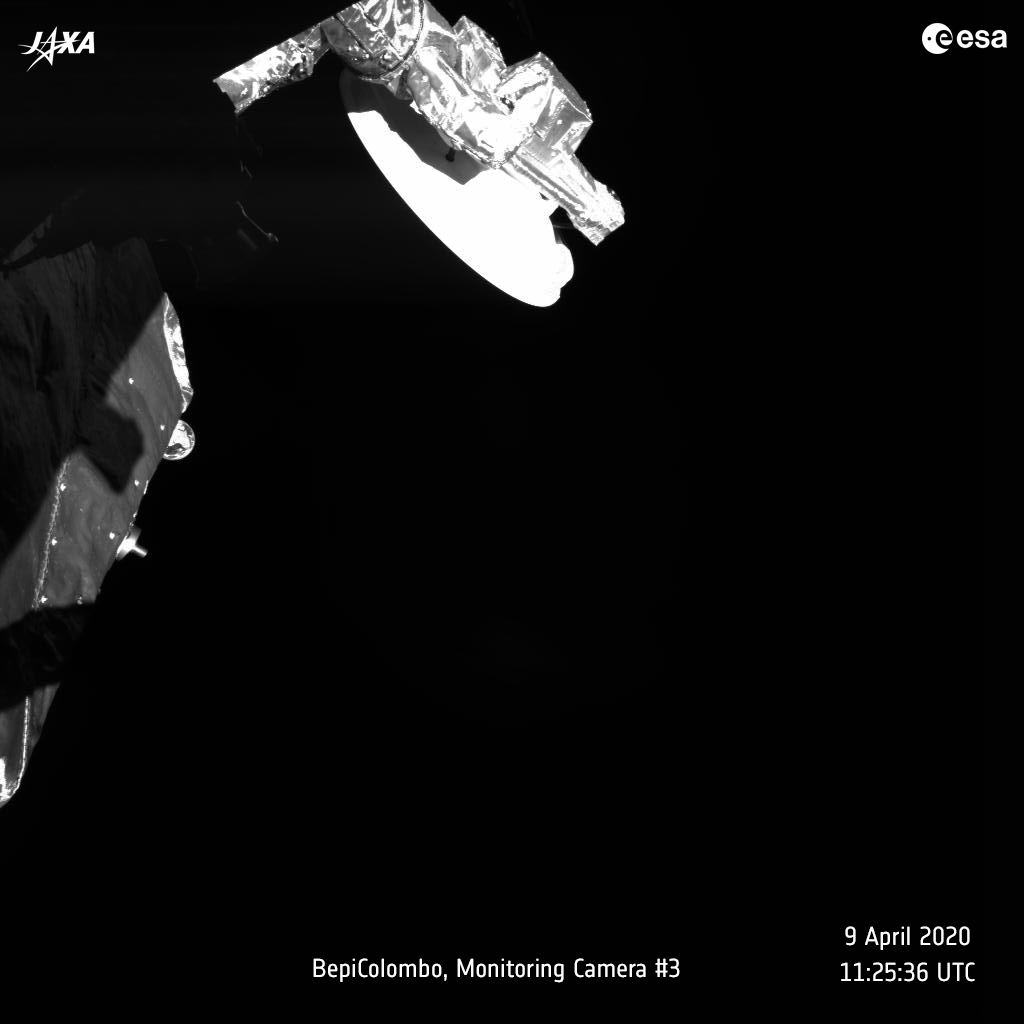The BepiColombo deep-space probe has successfully made its flyby of Earth on its journey to explore the planet Mercury. On April 10, 2020, at 6:25 am CEST, the joint ESA/JAXA mission passed within 12,700 km (7,891 mi) of the Earth's surface as the spacecraft carried out a slingshot maneuver and captured dramatic final images of our home.
Launched on October 20, 2018, BepiColombo is on a seven-year voyage that will see it arrive in orbit around Mercury in 2025. To achieve this, the unmanned spacecraft will carry out nine planetary flyby maneuvers of which the Earth encounter was the first. The remainder will include two flybys of Venus and six of Mercury before reaching its final orbit. These slingshot maneuvers allow BepiColombo to make the energy-intense journey after being launched from Earth using a relatively small rocket and ion thrusters enroute.
While it coasted past the Earth, BepiColombo took a series of images of the planet and activated some of its instruments on JAXA’s Mercury Magnetospheric Orbiter, which is one of the two tandem spacecraft that make up the probe, to take the opportunity to calibrate them before reaching Mercury.

According to ESA, the flyby wasn't without hazards. The first was that BepiColombo's trajectory took it through the Earth's shadow for 34 minutes. Because the spacecraft is solar-powered, Mission Control made sure that the onboard batteries were fully charged and that the systems were powered up to warm the electronics and protect them from the cold of space.
The other problem was more terrestrial. Mission Control at Darmstadt in Germany did not have its full staff on-site due to the current COVID-19 pandemic requiring social distancing measures to be introduced by ESA. However, the agency says that this reduced crew did not affect operations.
"Today was of course very different to what we could have imagined only a couple of months ago," says Johannes Beckhoff, ESA’s BepiColombo Project Scientist, who followed the operation from his home in the Netherlands. “We are all pleased that the flyby went well and that we could operate several scientific instruments, and we are looking forward to receiving and analyzing the data. These will also be useful to prepare for the next flyby when BepiColombo will swing past Venus in October.”
Source: ESA









